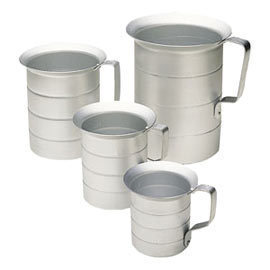Pipe Sizes
The following are the standard nominal industrial pipe sizes in use today.  The pipe dimensions are also available in metric equivalents.
The pipe dimensions are also available in metric equivalents.
Standard Nominal English Sizes:
These are 1/8", 1/4", 3/8", 1/2", 3/4", 1", 1 1/4", 1 1/2", 2", 2 1/2", 3", 3 1/2", 4", 5", 6", 8", 10", 12", 14", 16", 18", 20", 22", 24", 26", 28", 30", 32", 34" and 36".
Metric Sizes
Some of the sizes are 10 mm – 20 mm, 20 mm – 30 mm, 30 mm – 40 mm, 40 mm – 50 mm, 50 mm – 100 mm, 100 mm – 200 mm, 200 mm – 500 mm and 500 mm – 1000 mm.
Materials
Besides the pipe size, pipes can be made from different materials. The following are some of the most frequently used.
ABS Acrylonitrile-butadiene-styrene)
This is a stiff thermoplastic polymer known for its resistance to chemicals. It is also very stable. ABS is employed in numerous applications and different industries. It is also cheap. The drawback is it cracks when under pressure.
Aluminum
Aluminum is a malleable metallic element. It is bluish white and known for its high reflectivity. It is also oxidation proof. It is also a good conductor of electricity.
PVC
Polyvinyl chloride is one of the most frequently used materials for pipes. It is also known for its smooth even surface and being flexible. PVC is inert so it can be utilized in processing of chemicals.
Steel (Alloy and Carbon)
Steel is used in a generic sense. It can refer to steel alloys, mild steel and carbon steel. These will include vanadium, molybdenum, nickel or chrome. The corrosion resistance and the toughness will depend on the elements included. Black pipe is usually made of carbon steel.
Stainless Steel
These types of pipes will have high pressure ratings. They are also corrosion and chemical resistant. Keep in mind that there are several grades of stainless steel.
Titanium
Titanium is renowned for its resistance to corrosion. It is also used for processing chemicals.
PTFE / PTFE-Lined (Polytetrafluoroethylene)
This is an insoluble compound distinguishable for low friction and chemical resistance.
Polypropylene (PP)
This is a thermoplastic material known for its cold flow. In many ways, PP is a lot like PVC. PP is invulnerable to UV.
The pipe size used will determine the success of the project. For this reason, it is imperative that you select the pipe with the right dimensions. Of course you must also assess the pipe material as well.





